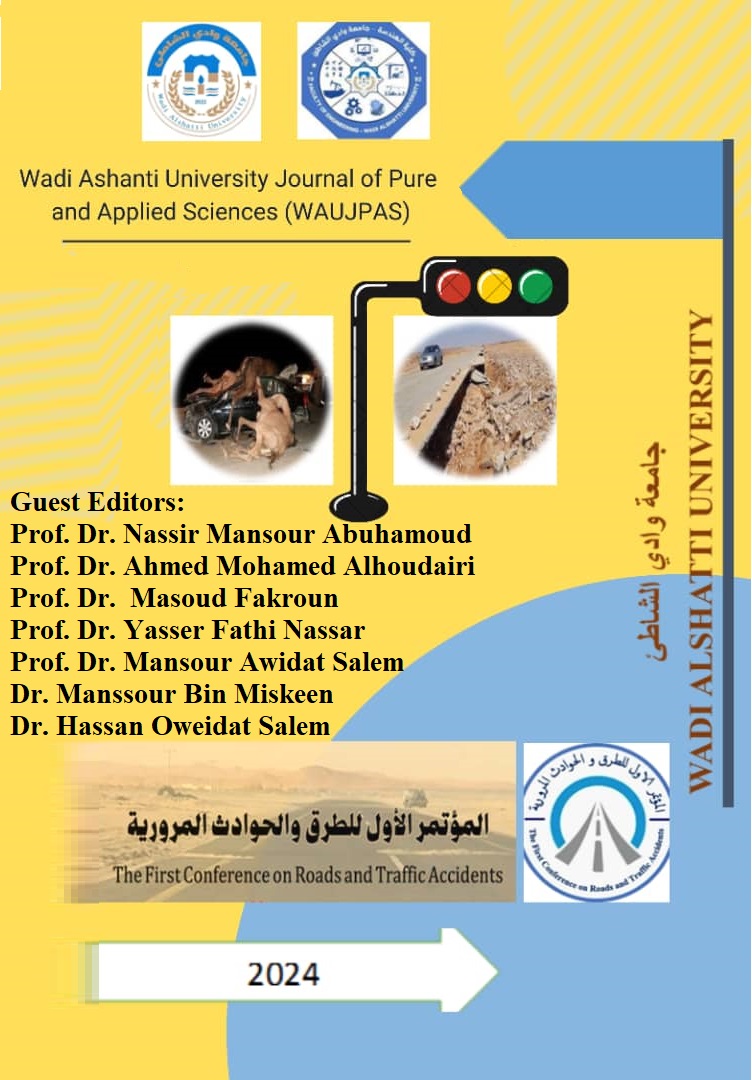Enhanced Performance of Asphalt Mixtures by Adding Recycled Rubber from Damaged Car Tires
Keywords:
Libyan roads, Flexible Paving, Stability, Flow, Recycled RubberAbstract
Due to the problems that the Libyan road network is exposed to, such as cracks and ruts resulting from increased loads on the roads. Therefore, research and development in this field aims to improve the properties of asphalt and enhance its performance on roads through the use of innovative technologies and improved materials. In this research, the properties of asphalt mixtures modified with rubber resulting from recycling damaged rubber car tires were studied, in order to improve their performance in terms of stability and flow, which enhances their ability to deal with expansion and contraction resulting from thermal changes and traffic movement on the roads. The results showed that when rubber was added to the asphalt mixture, all properties of the asphalt mixture improved, as the stability value increased by 15.8% when rubber was added, while the flow value decreased by adding rubber. By 14.5%. The results also showed that the best percentage of bitumen was 5.6%, and the best percentage of rubber added to the asphalt mixture was 9%. After extracting bitumen from the modified mixture with 9% rubber, it was found that the percentage of effective bitumen was 5.9%, which was 0.3% more than the optimum percentage of bitumen. Therefore, the percentage of bitumen decreased by 0.3% to be within the specifications. Based on the research results, we recommend using 9% rubber in the modified mixture in the asphalt mixture industry in Libya due to its benefits on the durability of the pavement, resistance to rutting, and reducing road maintenance. Adding rubber reduces the costs of road maintenance and paving by reducing the percentage of bitumen in the asphalt mixture.
Downloads
Downloads
Published
Issue
Section
License

This work is licensed under a Creative Commons Attribution-NonCommercial 4.0 International License.





